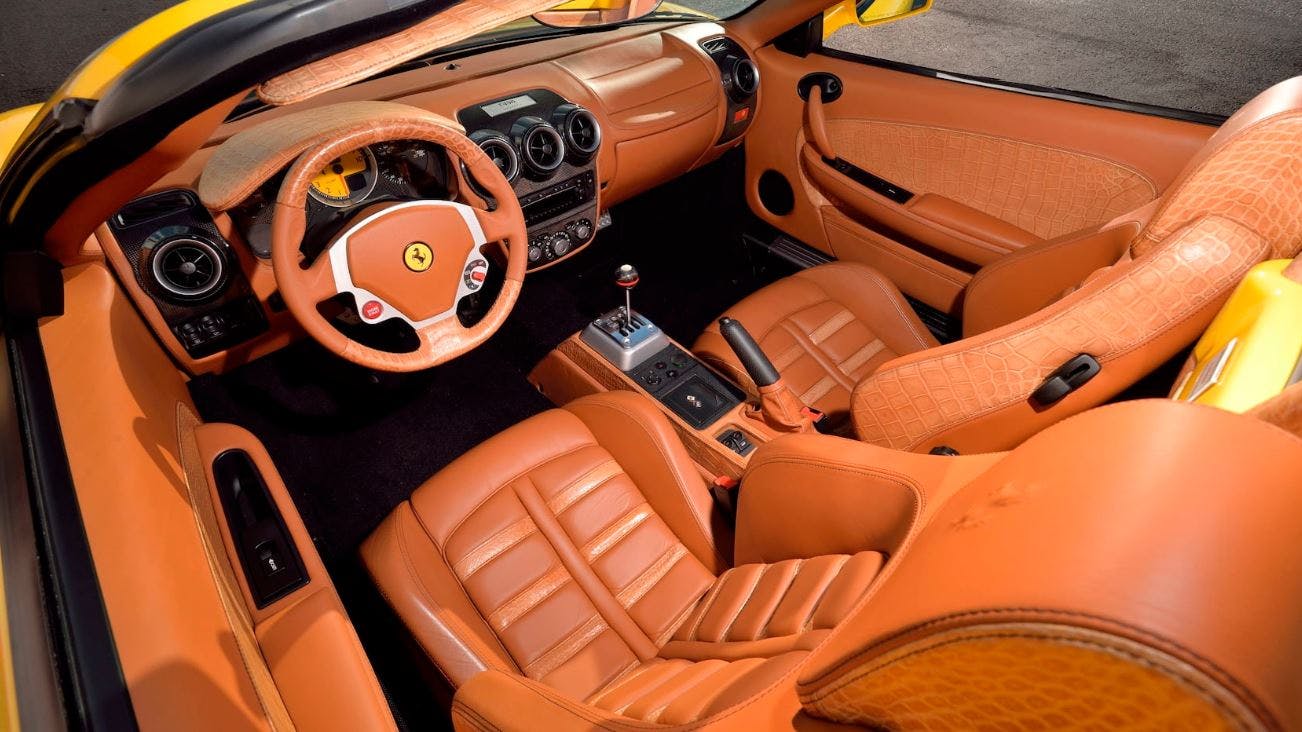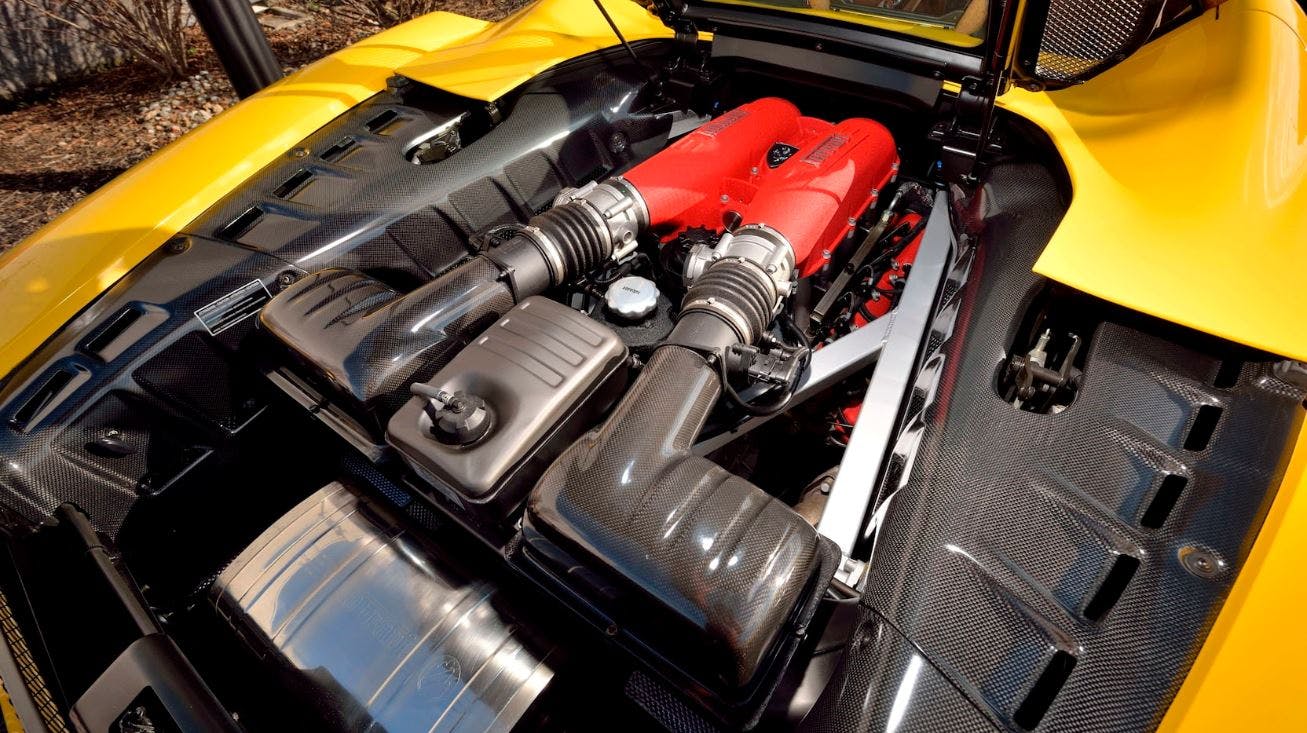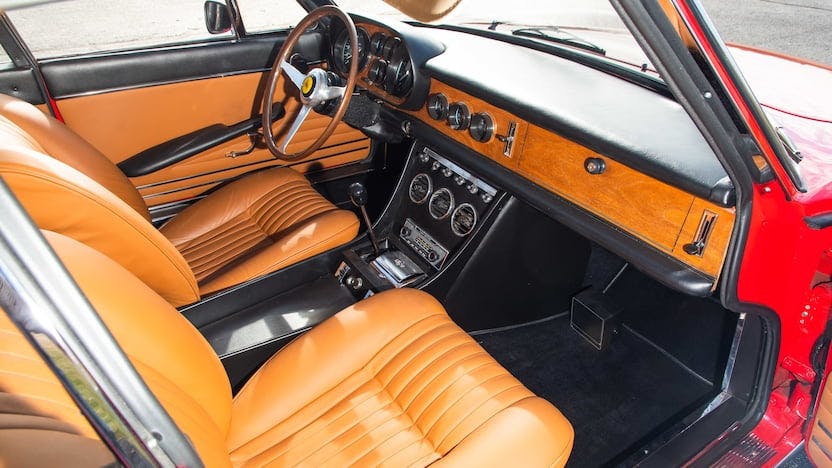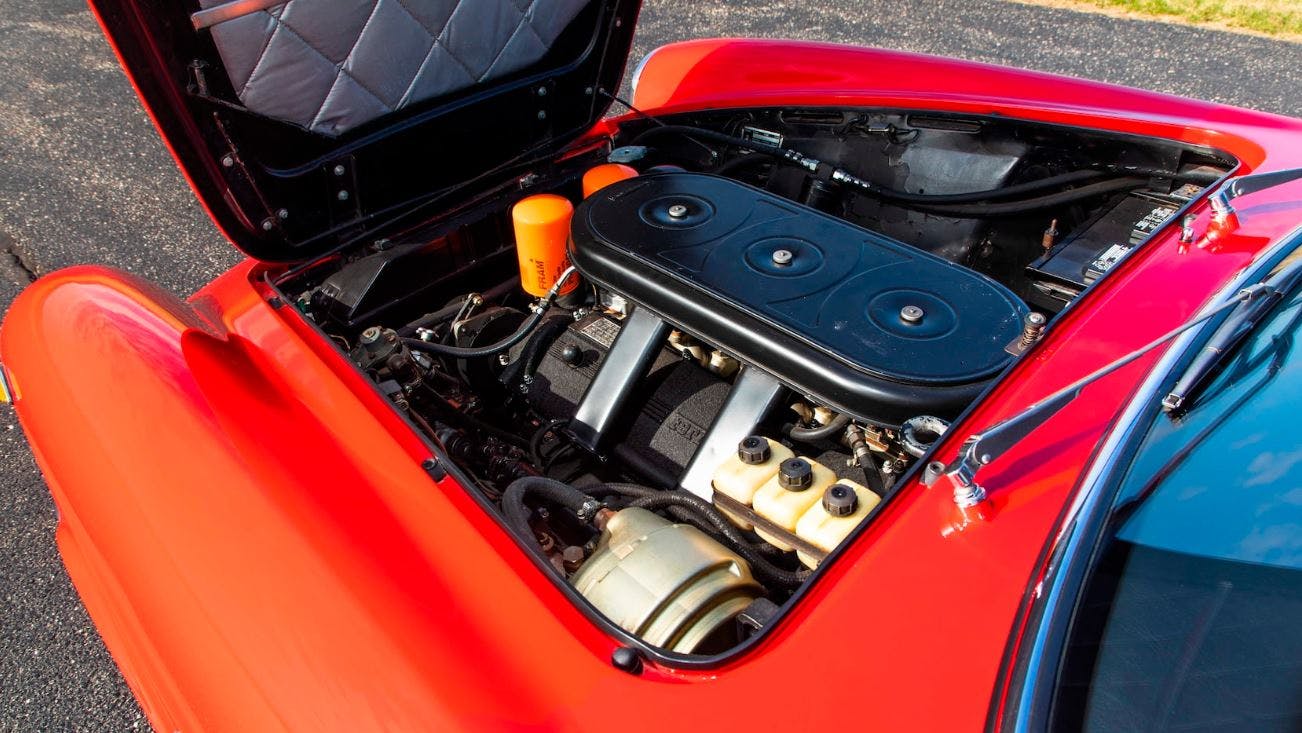Honor Maranello’s manuals with these 4 stick-shift Ferraris

At the time of this writing, there are about 30 new cars currently sold in America that offer a traditional, three-pedal manual transmission. Such vehicles range from sports cars like the Porsche 911 to econoboxes like the Mitsubishi Mirage. Each year, it seems, the roster gets a little smaller. Jaguar, a company that expressed a lot of excitement about offering a manual on its F-Type a few years after the debut of that model, reverted to only automatics for the sports car.
Ferrari, which prioritizes performance over everything when it comes to the brand’s cars, hasn’t offered a traditional manual gearbox for more than a decade. Automatic transmissions are simply quicker around a track, and every new Ferrari has to be measurably quicker than the last. Ferrari’s early single-clutch systems were made obsolete as improved technology entered the fray. For example, the F1 transmission in the Ferrari F355 (launched in 1997) could shift in 0.2 seconds (200 milliseconds) or “at the speed of a professional driver driving to the limit of his ability,” as Ferrari said at the time. By 2009, the Ferrari 458’s dual-clutch automated-manual made shifts in 75 milliseconds, or 170 percent faster. This might not seem like a lot of time, but it’s noticeable for drivers pushing the car to its limits on a road course.
You don’t need to be a vinyl record diehard to appreciate the appeal of analog. In the end, a manual gearbox offers a different experience, with greater driver engagement and mechanical sensation. If you’re in the market for a Ferrari with just those attributes, which you can enjoy by rowing gears with a gated shifter, there are several great examples up for grabs at Mecum’s Indy 2020 auction scheduled for July 10–18.
2007 Ferrari F430 Spider

Starting with the F355, Ferrari offered customers a six-speed “F1” electrohydraulic automated manual with shift paddles—a first for a road car. The public didn’t immediately take to the F1 transmission, as more F355s were made with the three-pedal six-speed than the F1, at a rate of about two to one. For the Ferrari 360, the succeeding generation of Ferrari’s mid-engine V-8 supercar, that ratio flipped. More cars were made with the F1 transmission, a reversal that signaled the slow decline of the stick shift in Ferraris.
The final mid-mounted V-8 Ferrari to offer a gated shifter was the F430, which went out of production in 2009. The Ferrari 458 that followed only offered a seven-speed dual-clutch gearbox. Over 15,000 F430s were produced, and it is suspected that only 10 percent of them have a traditional manual transmission, making it a rare vehicle in the context of V-8 Ferraris, but the least rare car on this list.
Though it’s 13 years old, the F430 feels like a modern Ferrari. It was the first of the brand’s cars to feature the Manettino dial on the steering wheel that allows the driver to select from five modes with varying driving characteristics—a feature still found on new models. While all previous generations were powered by a V-8 evolved from the 40-year-old Dino program, the V-8 used in the F430 was of a new design shared with Maserati and eventually used in the 458.
This 2007 F430 offered at Mecum Indy 2020 is fully loaded and basically still in the wrapper, showing just 441 miles. No expense was spared making this spider special. The original owner opted for the $17,000 carbon ceramic brakes, a feature that was unheard of on road cars at the time. A custom alligator pattern leather interior by Schedoni didn’t come cheap, either—the materials alone cost $115 per inch. This yellow F430 Spider is a great way to commemorate the end of a three-pedal era for mid-engine Ferraris.
2007 Ferrari 599 GTB Fiorano

The lineage of flagship V-12 Ferrari grand tourers can be traced back to the 1950s. Like the F430, the 599 GTB was the last of a Ferrari model line to offer three pedals. Although thousands of 599s were produced over the car’s six-year production run from 2006–2012, only 30 examples worldwide had a manual transmission.
Since it was the first Ferrari GT built on an aluminum chassis, the 599 still feels like a modern Ferrari GT. The 612 horsepower 6.0-liter V-12 is a modified version of the engine used in the Ferrari Enzo and Maserati MC12. Later versions of this engine went on to be used in the LaFerrari, the F12 TdF, and the 812 Superfast, but this 599 has one thing those great cars don’t: three pedals.
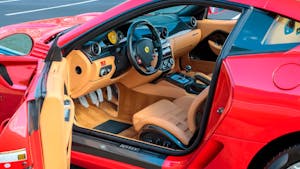
The 599 GTB offered at Mecum Indy is in excellent condition. With only 4600 miles, it’s been very lightly driven. The 599 was beautifully styled by Pininfarina and has aged rather well. The flying-buttress C-pillars, which provide enough downforce to eliminate the need for a rear wing, are particularly brilliant. This is a great opportunity to buy the final version of a great Ferrari with a highly desirable combination of traits: front-mounted V12, two-seat coupe, with a gated manual transmission. All of that comes at a price, of course. Ferrari 599 GTBs are currently valued with a $150,000 manual transmission premium in the Hagerty Price Guide.
1995 Ferrari F512 M

The Ferrari F512 M was the greatest and final evolution of the Testarossa platform that started a decade earlier. Improving on the 512 TR (an already-improved version of the original Testarossa), Ferrari tweaked and tuned the F512 M to get the best performance possible from the mid-mounted flat-12 layout. The F512 M had quicker steering and improved handling due to better weight distribution and suspension tuning. The flat-12 was redesigned with titanium connecting rods and a new crankshaft, saving a combined 16 pounds. This weight reduction in moving parts allowed the engine to rev more freely, which allowed the redline to increase from 6800 to 7500 rpm, and in doing so made the 10,000 rpm tachometer finally seem a little less ridiculous. Power grew from 385 horsepower (on the original Testarossa) to 434 horsepower, resulting in a 4.7-second sprint to 60 and a 12.7-second quarter-mile. A whole second faster for both measurements.
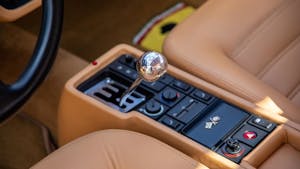

Although the Testarossa and 512 TR had a combined production of nearly 10,000 cars, the F512 M was limited to only 501 cars, making it one of the rarer modern Ferraris. The F512 M differs strongly in appearance from the Testarossa and 512 TR, but it retains the “cheese-grater” side strakes that people remember so well. The iconic side strakes weren’t just for appearance; they were necessary to meet safety regulations that outlawed large openings on cars. Perhaps officials feared a speeding Testarossa could swallow up children and/or small animals?
The F512 M offered in Mecum’s July auction is in excellent condition, with only 12,000 miles. If you want the original, there is a 105-mile Testarossa available, as well.
1967 Ferrari 330 GTC
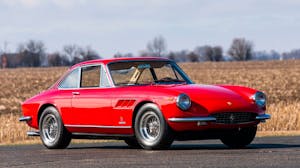
Arguably, no car on this list provides a more visceral driving experience than the 330 GTC. The 330 GTC and GTS, its convertible counterpart, have been regarded as one of the best driving Ferraris of the era and, possibly, of all time.
The 330 GTC has more in common with the 275 GTB that preceded it than the less desirable 330 2+2 variants. Sharing a chassis with the 275 GTB, the 330 GTC has the same fully independent suspension and disc brakes at all four corners, making it handle much better than most cars of the era. This coupe also has a five-speed transaxle to improve weight distribution, which Ferrari introduced a few years earlier on the 275. The well-engineered suspension, combined with the powerful 4.0-liter V-12, makes the 330 GTC plenty drivable on modern roads. With only 600 examples produced, and a current #2 (Excellent) condition value of $540,000, the 330 GTC is a fantastic car for the money. For those looking for a 275, a “long-nose” GTB/4 is being sold through Mecum on the same weekend, but for that car you can expect to pay nearly four times as much.
